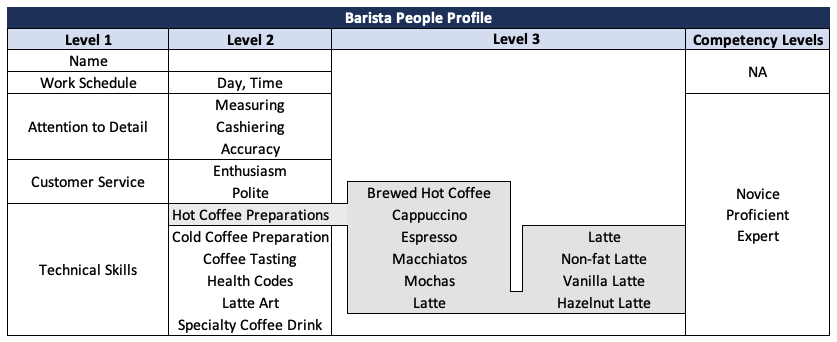Building a Classification Model
The Intelligent Swarming Practices are highly dependent on what we know about people and work. The attributes that make up the People Profiles, Work, and Knowledge Articles are what allow us to make relevant connections quickly and accurately. It cannot be overstated how much a common classification model across these three elements will enhance a company's efficiency in an Intelligent Swarming system.
What is a Classification Model?
Generally speaking, a classification model is how we designate things according to shared qualities or characteristics. For an Intelligent Swarming system, the intelligence depends on our ability to associate different data elements from various sources. A well-designed classification model with like attributes for each source will make it easy for humans or machines to make the most relevant connections.
Considerations for a Classifications Model
How many data sources can be leveraged, how they interact, and how the data is structured varies wildly from company to company and even organization to organization. Additionally, it is not uncommon to find companies classify products or services internally different from how a product or service is brought to market or viewed by a customer.
Five categories are emerging as areas of focus for organizing and identifying the attributes of the data sources.
- People Profiles: The attributes of the people in the system. Includes people who are both internal and external to the organization who play requestor and responder roles.
- Work: The work item itself (request, case, incident, task, etc).
- Customer Entity: Details about the customer's company or organization.
- Offering: Products and services being offered to customers, internal and external viewable.
- Knowledge: Knowledge articles, product documentation, and more.
Classification in Action
Example Classification Model: Café People and Work
Continuing with our example of a Café, we have People Profiles (Barista and Customer) and the work profile (Menu). Using the same classification for each will make connecting work to people and people to people easy when a work request comes in. Below, we can see that the work (menu) classification for the Hot Coffee is the same as what we capture in the People Profile for the skills to make hot coffee.


